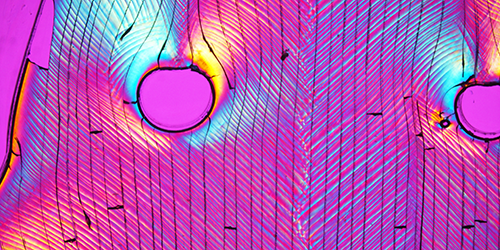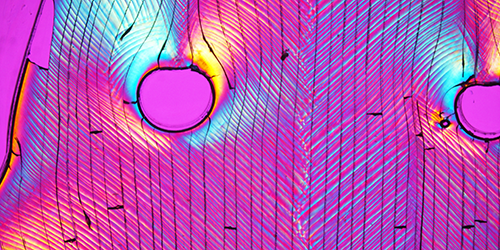Explaining Chevron-Shaped Bands in Drying Colloids
Many paints, inks, and coatings are made from particles suspended in a liquid—so-called colloidal dispersions—and the process by which they dry is of great interest to engineers. One long-standing puzzle has been the formation of zigzagging stripes that form behind the drying front of a colloid film that dries progressively from one side to the other. Researchers have now shown that the stripes result from shear stress that occurs within the newly formed solid as water moves through it.
To address the puzzle, Lucas Goehring and Pree-Cha Kiatkirakajorn of the Max Planck Institute for Dynamics and Self-Organization in Göttingen, Germany, studied colloids of nanometer-sized plastic and silica particles in water. The team allowed these dispersions to dry in cells 36 to 500 micrometers thick. They studied the effects of various parameters and found, for example, that the chevron stripe spacing was proportional to the film thickness, but the pattern was unaffected by the particle size.
The team concluded that evaporation from the drying, solidifying colloid draws water through the film, from the liquid side toward the solid side, compressing the particles against the solid and producing shear stress within it. Diagonal stripes of oscillating density are the consequence of the solid trying to relieve such stress. According to Goehring, the situation is similar to compressing a glass cylinder along its axis. Doing this forcefully enough will eventually break it, most likely along a diagonal—the direction with the highest shear stress.
This research is published in Physical Review Letters.
–David Ehrenstein





